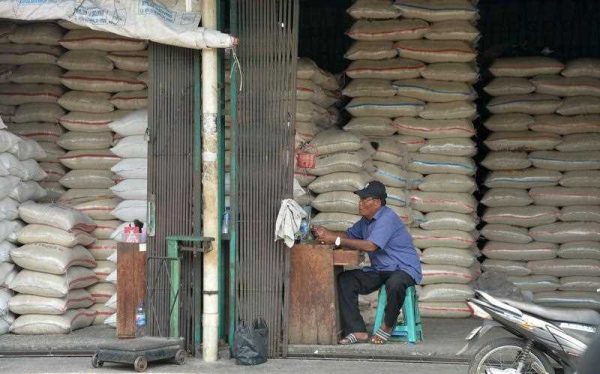One possible alternative is to reform access to finance for SMEs — particularly from commercial banks — in ASEAN economies.
SMEs — firms with fewer than 100 workers — make up most enterprises, 74 per cent of total employment and about 41 per cent of GDP in ASEAN economies. But these contributions are not reflected in trade, where SMEs make up only 21 per cent of direct exports across the ASEAN region.
Today, trade increasingly means global supply chain trade: between factories across the world, which trade in parts and components rather than finished goods. Since the 1980s, ASEAN’s participation in supply chains accounts for a sizeable part of its respectable 5–6 per cent annual economic growth. ASEAN economies, though, will face competition from India, Bangladesh and other new entrants in the future due to moderating regional growth and rising costs.
Adjusting business strategies and reforming commercial bank finance are critical for expanding ASEAN’s role in supply chain trade. In this, firm size matters. Being a big firm naturally creates advantages to participate in supply chains due to economies of scale, better access to technology from abroad, and more capacity to pay higher wages for skilled labour and spend more on marketing. For these firms, business strategies — such as mergers, acquisitions and forming business alliances with multinationals or large local business houses — are all smart, rational approaches.
Under some circumstances, nimble SMEs in ASEAN economies can also join supply chains. By clubbing together in industrial clusters, SMEs can overcome some of the disadvantages of their small size and rely on the benefits of interdependence. For instance, small firms located in clusters can jointly finance a training centre or a technical consultant to help upgrade skills. Business associations can facilitate clustering by encouraging trust and cooperation among SMEs and by helping to coordinate collective actions.
One critical constraint affecting SMEs in ASEAN economies is their lack of access to finance from commercial banks, especially in poorer economies like Cambodia, Laos and Myanmar. Financial systems in ASEAN economies are dominated by a few commercial banks, which typically undertake more certain and profitable lending to consumers and big corporations. Accordingly, SMEs continue to rely on internal sources — their own savings, money lenders and non-bank instruments — for most of their financial needs.
What needs to be done to improve the situation?
First, ASEAN economies should continue to encourage the creation of sound and effective banking systems to increase the supply of finance, including to SMEs. Expanding banking systems and encouraging competition among commercial banks is vital, through privatising state banks and facilitating the entry of reputable foreign financial firms. Enacting competition laws provides a level playing field for domestic and foreign financial institutions alike. And effective central bank regulation of commercial banks is a pre-requisite for a deep financial system.
Second, ASEAN should look to change laws relating to collateral. Commercial banks rarely lend to SMEs, partly because many banks are not designed to do so. Commercial banks may not know how to properly evaluate the working capital requirements of SMEs and their investment projects. One possibility could be to allow the use of non-fixed collateral. Another is to work with business associations to develop new forms of social collateral. For example, in SME clusters in Japan, peer influence within a network of SMEs has proven effective in getting businesses to pay back their loans.
Third, there is a need to invest in financial literacy for SME entrepreneurs and managers. Commercial banks require business and financial plans, but many of the SMEs that really need credit do not have the capacity to prepare these plans. SMEs typically use a single-entry accounting system, but banks expect to see something more complex. Financial literacy programs in high schools and universities, along with short financial literacy courses for SME managers, would be ideal in addressing this disconnect.
Finally, ASEAN should improve credit assessment schemes for SMEs. Many ASEAN economies lack independent market institutions capable of rating SME credit-worthiness. Establishing a domestic credit bureau for SMEs could be a useful way forward in establishing trust in SMEs that have not previously had formal credit rating systems.
A more effective system of commercial bank finance for SMEs in ASEAN is better than a plethora of intrusive industrial policies. There are no quick fixes to improving access to finance and to global trade opportunities for SMEs, which will take time and require political will. But reforming commercial bank financing of SMEs could be a good start.
Ganeshan Wignaraja is an advisor in the Economic Research and Regional Cooperation Department of the Asian Development Bank.

